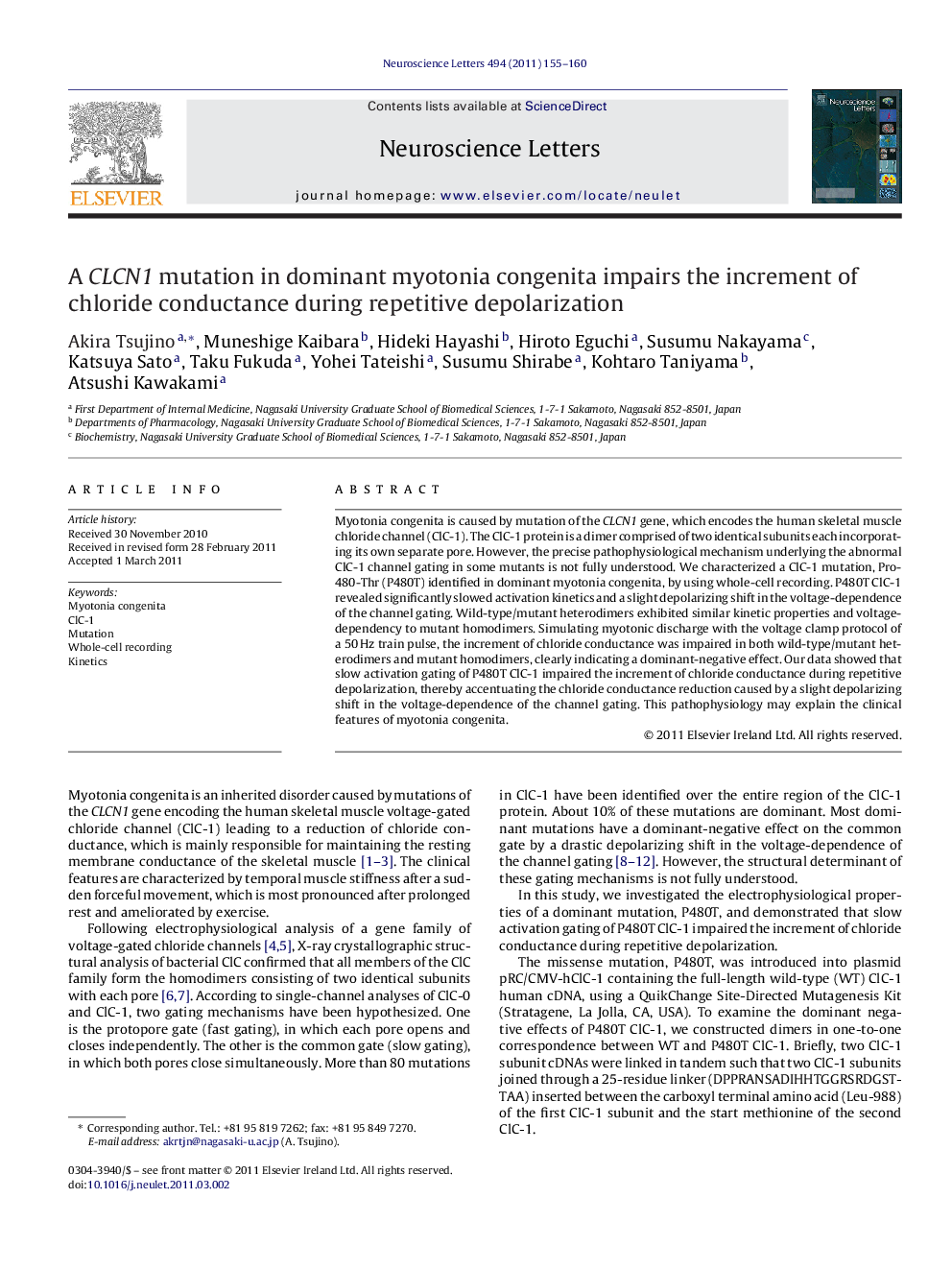| Article ID | Journal | Published Year | Pages | File Type |
|---|---|---|---|---|
| 4345545 | Neuroscience Letters | 2011 | 6 Pages |
Myotonia congenita is caused by mutation of the CLCN1 gene, which encodes the human skeletal muscle chloride channel (ClC-1). The ClC-1 protein is a dimer comprised of two identical subunits each incorporating its own separate pore. However, the precise pathophysiological mechanism underlying the abnormal ClC-1 channel gating in some mutants is not fully understood. We characterized a ClC-1 mutation, Pro-480-Thr (P480T) identified in dominant myotonia congenita, by using whole-cell recording. P480T ClC-1 revealed significantly slowed activation kinetics and a slight depolarizing shift in the voltage-dependence of the channel gating. Wild-type/mutant heterodimers exhibited similar kinetic properties and voltage-dependency to mutant homodimers. Simulating myotonic discharge with the voltage clamp protocol of a 50 Hz train pulse, the increment of chloride conductance was impaired in both wild-type/mutant heterodimers and mutant homodimers, clearly indicating a dominant-negative effect. Our data showed that slow activation gating of P480T ClC-1 impaired the increment of chloride conductance during repetitive depolarization, thereby accentuating the chloride conductance reduction caused by a slight depolarizing shift in the voltage-dependence of the channel gating. This pathophysiology may explain the clinical features of myotonia congenita.
► We investigated the function of a dominant mutation, P480T, in myotonia congenita. ► The activation kinetics was slowed significantly. ► The voltage-dependency of gating was slightly shifted to positive potentials. ► An increment of chloride conductance was impaired during repetitive depolarization. ► P480T also had a dominant negative effect.
